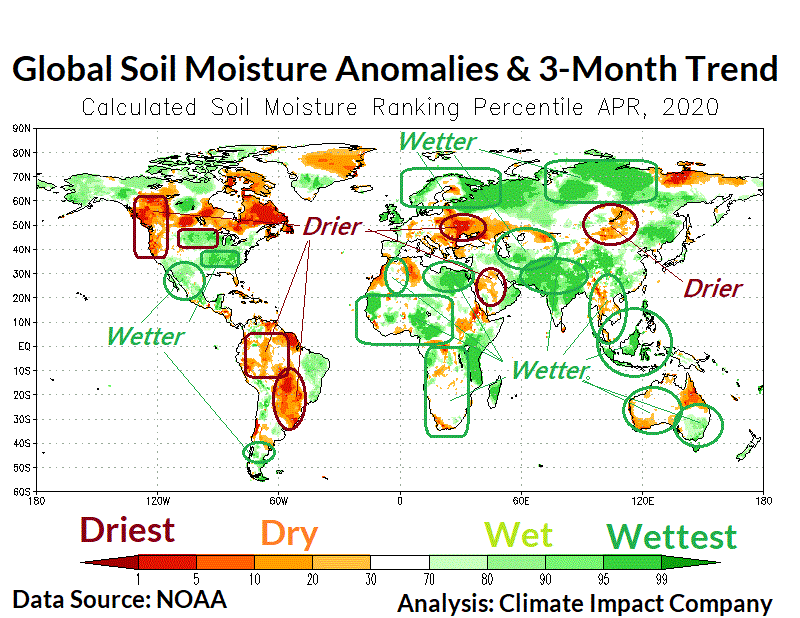
Global Soil Moisture Regime At The End of April 2020: Very wet!
05/06/2020, 10:38 am EDTSubsurface East Pacific Cools Dramatically: La Nina Is On the Way!
05/11/2020, 12:24 pm EDTHighlight: Weak La Nina likely during tropical cyclone season…enhances frequency and intensity of events.
Executive Summary: Paramount to the activity and intensity level of the 2020 North Atlantic basin tropical cyclone season is the El Nino southern oscillation (ENSO) phase. A borderline weak El Nino recently ended and neutral ENSO is firmly in-place for May 2020. The ENSO monitoring region across the central and east equatorial Pacific Ocean is cooling and subsurface ocean heat is decelerating rapidly. Forecast models have trended toward weak La Nina in the AUG/SEP/OCT timeframe but not all are in agreement (other models keep ENSO in neutral phase). Climate Impact Company favors weak La Nina based primarily on the cooling subsurface ocean heat trend.
Tropical cyclone activity in the North Atlantic basin is above normal for both neutral ENSO and La Nina and can be much above normal if the La Nina is stronger. Neutral ENSO to weak La Nina is confidently forecast for the 2020 tropical cyclone season. Presence of these ENSO conditions lowers upper westerly shear in the tropical North Atlantic basin allowing tropical cyclones to develop and strengthen more easily.
ENSO is not a particularly good climate forecaster for mid-latitude locations during the warm season. During northern hemisphere summer ENSO will modulate tropical climate including the various tropical monsoon climate patterns and residual effects from these regimes can certainly effect mid-latitude climate. Primary northern hemisphere La Nina influences during summer are an evolving wet monsoon for India/Southeast Asia and the Caribbean Sea (related to tropical cyclone activity). In the U.S. summertime has a tendency for anomalous dryness and warmth in the Great Plains.

Fig. 1: The Climate Impact Company ENSO phase probability forecast.

Fig. 2: The daily global oceanic SSTA analysis reveals the tropics are warm but less so in the Pacific Ocean and the ENSO monitoring area is neutral.

Fig. 3: The 30-day SSTA change analysis identifies moderate cooling throughout the Pacific ENSO monitoring area.

Fig. 4: The subsurface equatorial Pacific Ocean upper ocean heat content is cooling rapidly, an indicator of an ENSO phase trend toward La Nina.

Fig. 5: Climate Impact Company 1950-2020 tropical cyclone climatology according to ENSO phase. (Other factors such as the North Atlantic basin SSTA pattern can enhance historical totals).


Fig. 6-7: Forecast models have 2 opinions on ENSO phase for the core of the North Atlantic basin tropical cyclone season…Neutral (GFDL) and weak La Nina (NMME). The trend is toward weak La Nina and favored by Climate Impact Company.
![Climate-Impact-Company-logo-sm[1]](https://climateimpactcompany.com/wp-content/uploads/2023/08/Climate-Impact-Company-logo-sm1.png)